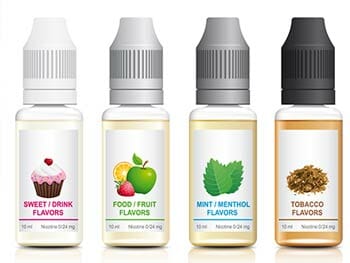
Would you leave a bottle of bleach within the reach of a toddler? Parents know to store household chemicals behind locked cabinet doors or on a high shelf, aware and wary of accidental poisonings that befall curious children. And yet, too many parents are leaving containers of significantly more toxic and enticing liquids where children can get their hands on them. Bearing pictures of candy canes, juicy fruits and sweets, and lacking childproof caps, bottles of liquid nicotine for refilling e-cigarettes are fatal temptations.
In December 2014, a one-year-old in upstate New York died after ingesting liquid nicotine at his home. He was found unresponsive and rushed to a hospital where he was pronounced dead.
Shortly thereafter, Gov. Cuomo signed into law a measure that prohibits any business owner from selling liquid nicotine in N.Y. unless it is packaged in a child-resistant bottle. Other states are considering similar legislation. On the federal level, the Child Nicotine Poisoning Prevention Act of 2015 has unanimously passed the Senate Commerce Committee. It directs the Consumer Product Safety Commission to promulgate a rule requiring liquid nicotine containers to be designed with special packaging that is difficult for children under five years of age to open or to obtain harmful contents from and applies to liquid nicotine the same standard applicable to a household substance under the Poison Prevention Packaging Act of 1970.
It’s likely the parents of the New York toddler didn’t realize their e-cigarette refill bottle contained a highly poisonous substance. March 15 through 21 is National Poison Prevention Week; please learn about the dangers of vaping products and pass the information on to protect little ones in your family and neighborhood.
- Liquid nicotine poisonings are on the rise. In 2010, U.S. poison control centers averaged one call per month related to e-cigarette products; by early 2014, that had increased to nearly 200 calls per month, according to the CDC. In just the month of January 2015, there were 387 calls to poison control centers related to e-cigs and liquid nicotine.
- A person can be poisoned by liquid nicotine through ingestion, inhalation or by absorbing the substance through the skin.
- Although e-cigs comprise less than 2 percent of all tobacco-related sales, they now account for more than 40 percent of poison center calls.
- More than half of the calls concerning nicotine poisoning involve children younger than 5 years old.
- According to the American Academy of Pediatrics, the amount of nicotine in some small 15-milliliter bottles of e-liquid is enough to kill four small children. One swallow can be fatal.
- Even if a child spits out the liquid nicotine without swallowing it, it will be absorbed into the mucous membranes.
- If a child swallows a single teaspoon of 24-milligram-strength liquid nicotine, it’s the equivalent of smoking three packs of cigarettes all at once.
- According to Dr. Richard Clark, medical director for the California Poison Control System and a professor of toxicology, “Nicotine is probably the most toxic plant chemical ever discovered.”
- Unlike nicotine gums and patches, e-cigarettes and their ingredients are not regulated.
- Dr. Tim McAfee, director of the Office on Smoking and Health at the CDC, said, “Cigarettes are the most dangerous consumer product on the planet, and smokers need to treat e-cigs with considerable caution especially since the product is unregulated.”
- One industry source estimates that this year in the United States there will be sales of one million to two million liters of liquid used to refill e-cigarettes.
- The symptoms of nicotine poisoning include vomiting, flushing, rapid heart rate, drop in blood pressure, seizures and coma.
- If you suspect a child has been exposed to liquid nicotine, call the poison control hotline immediately at 1-800-222-1222. If it was put in the mouth, DO NOT induce vomiting. If it was spilled on the skin, DO wash the area with soap and lots of water.
